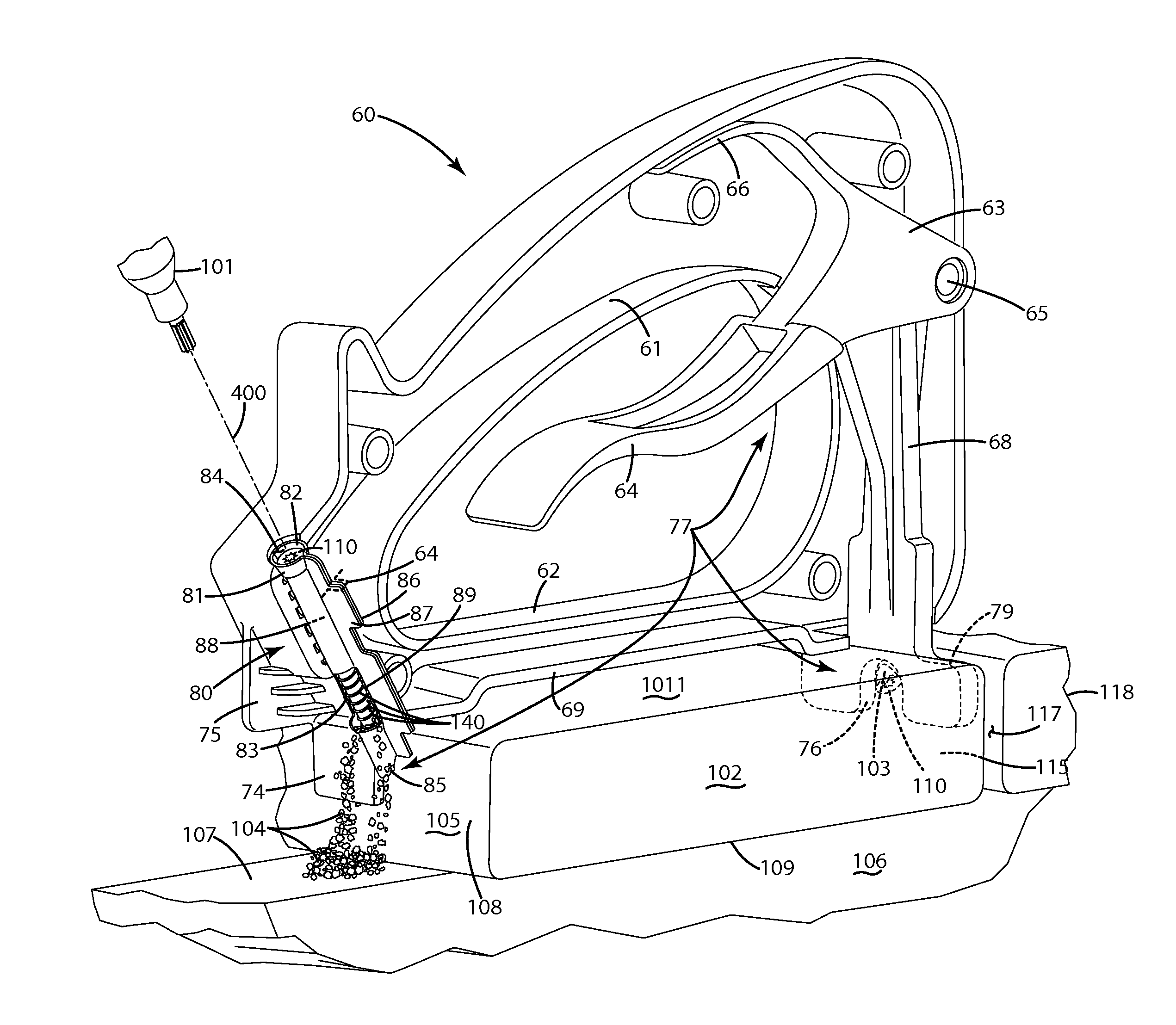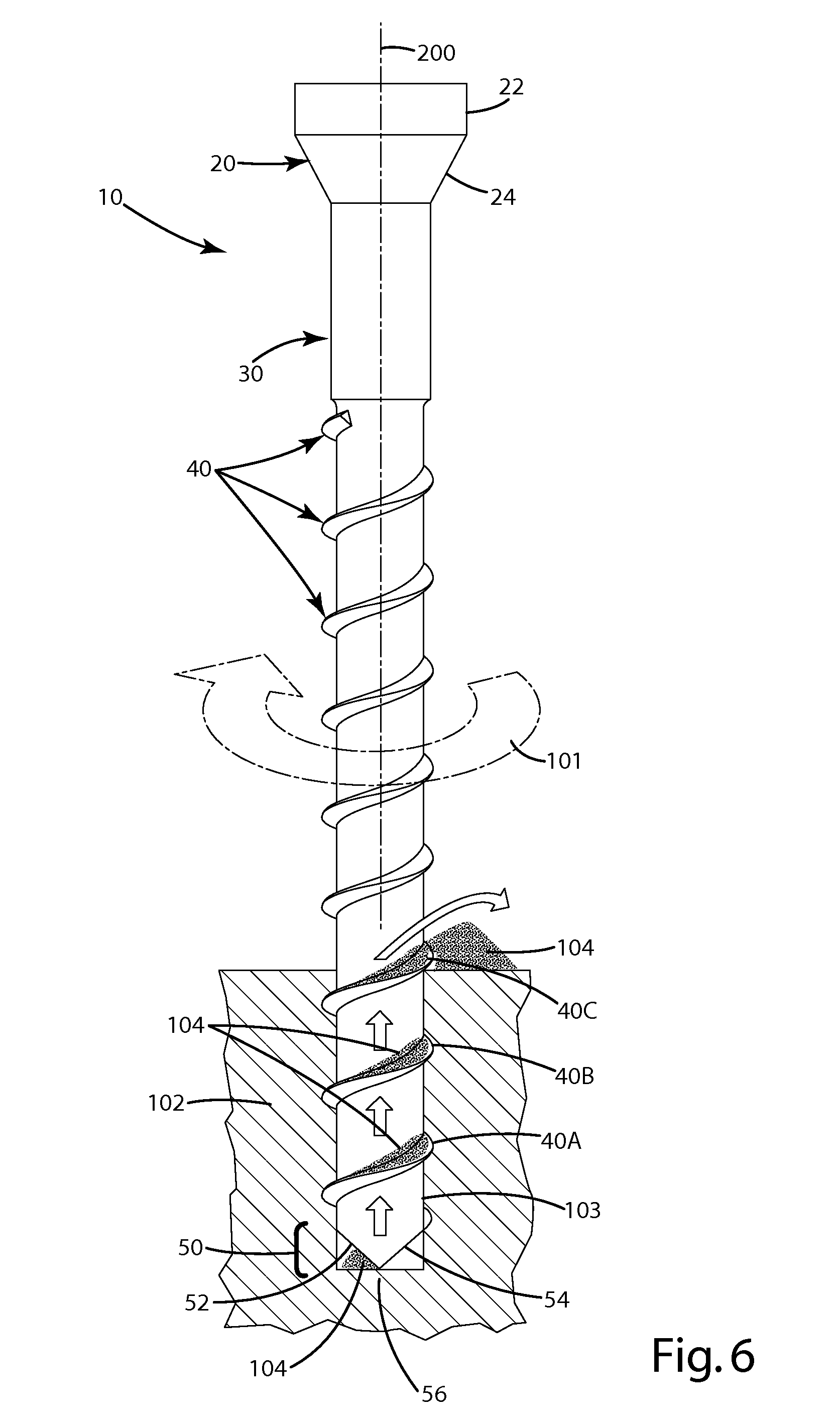Fastener, installation tool and related method of use
a technology of installation tools and fasteners, which is applied in the field of fasteners, can solve the problems of splintering of the lower corner of the board from the rest of the board, cutting or drilling into the wood, and the “side angled screws” are relatively unnoticeable by an observer looking straight down at the boards, so as to achieve the effect of convenient and consistent us
- Summary
- Abstract
- Description
- Claims
- Application Information
AI Technical Summary
Benefits of technology
Problems solved by technology
Method used
Image
Examples
embodiment
VIII. Fourth Alternative Tool Embodiment
[0265]A fourth alternative embodiment of the fastener installation tool is illustrated in FIG. 42 and generally designated 760. The installation tool shown there is similar in construction and operation to the embodiments described above with several exceptions. For example, the tool 760 can includes only a single guide 780. To the guide, a handle 761 can be attached, however, the handle 761 can extend transversely to the length of the work piece 602. For example, the handle 761 can extend rearwardly from the guide 780 upward and over the upper surface 611 of the work piece 602. The handle can be ergonomically shaped and can include a base support 763 that extends downwardly to a base 765. The base 765 can extend toward and can be connected to the head 796 of the guide 780. The base 765 can be configured to engage the upper surface 611 of the work piece 602. If desired, the base can include a lower surface 766 that is contiguous with the work ...
PUM
 Login to View More
Login to View More Abstract
Description
Claims
Application Information
 Login to View More
Login to View More - R&D
- Intellectual Property
- Life Sciences
- Materials
- Tech Scout
- Unparalleled Data Quality
- Higher Quality Content
- 60% Fewer Hallucinations
Browse by: Latest US Patents, China's latest patents, Technical Efficacy Thesaurus, Application Domain, Technology Topic, Popular Technical Reports.
© 2025 PatSnap. All rights reserved.Legal|Privacy policy|Modern Slavery Act Transparency Statement|Sitemap|About US| Contact US: help@patsnap.com



